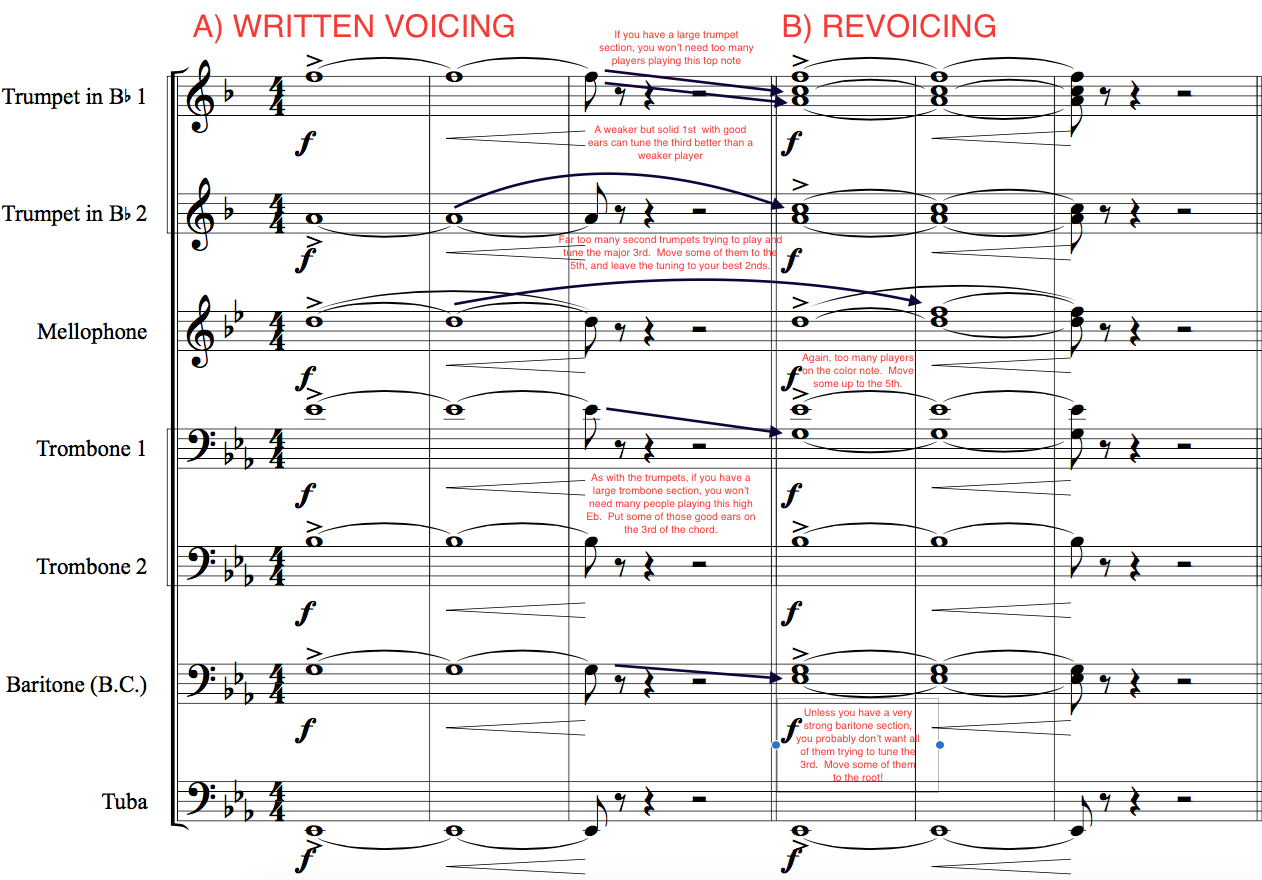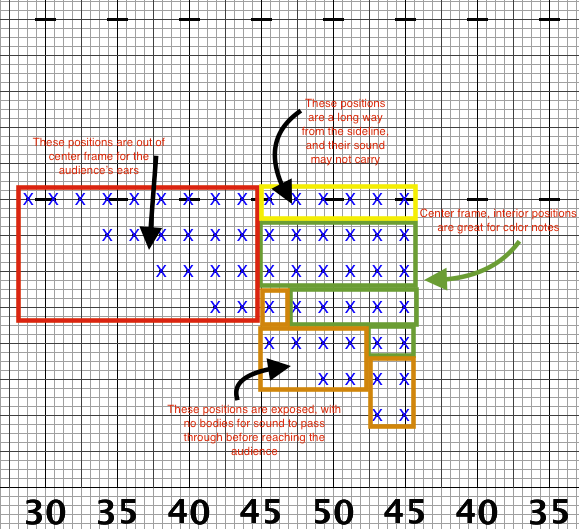5-Minute Read: Maximize Your Brass Impacts!
Hello out there, band directors! It's been quite a while since I posted one of my 5-Minute Reads. For one thing, I like to time these posts so that they are most relevant to what's happening in the school band year at the moment, and you've all been enjoying a much-deserved summer break. But also, I've been having a blast (busy as it may be) traveling as the Brass Caption Head for the Blue Stars Drum and Bugle Corps during this summer's DCI tour.
Today I want to discuss ways to maximize the brass impact moments in your field show. We all want the excitement and crowd response that only a big sustained chord in the brass can provide. But we have to pair that with attention to quality of sound, proper intonation and blend, and an acceptance of the limitations of our brass performers. Thankfully, we can employ some techniques that take all of those factors into account.
Reduce the Prevalence of Color Notes
We all know that not all notes in a chord are created equally!  "Color" notes like the 3rd, 7th, and 9th require far less volume to be heard, and they require more adjustments to play in tune. Therefore, make sure that only a few of your strongest players, with the best sound and intonation, play those color notes. All of your other performers can be moved to the root and 5th of the chord. Take a look at the following example (click/tap for a larger view).
"Color" notes like the 3rd, 7th, and 9th require far less volume to be heard, and they require more adjustments to play in tune. Therefore, make sure that only a few of your strongest players, with the best sound and intonation, play those color notes. All of your other performers can be moved to the root and 5th of the chord. Take a look at the following example (click/tap for a larger view).
Consider Field Position When Balancing an Impact Moment
 In addition, consider the position of your performers when deciding who will play the color notes. If performers are right up front and center in the field or the form, then their sound may be too bright and present to play in balance. Conversely, if they are far outside the center of the field, and/or they are far away from the sideline, they may not be heard playing the color tones. Thus, try to select your best players who are within the form, near the center of the field, and with a moderate number of bodies through which their sound can pass to the audience. Check out this example (click/tap for a larger view)
In addition, consider the position of your performers when deciding who will play the color notes. If performers are right up front and center in the field or the form, then their sound may be too bright and present to play in balance. Conversely, if they are far outside the center of the field, and/or they are far away from the sideline, they may not be heard playing the color tones. Thus, try to select your best players who are within the form, near the center of the field, and with a moderate number of bodies through which their sound can pass to the audience. Check out this example (click/tap for a larger view)
Develop and Teach a Breathing Pattern to Prep the Impact Moment
Impact points often occur in the interior or late in a show, when minds, bodies, and lungs are sapped of stamina! So never hesitate to create and assign breathing patterns in the phrase leading up to an impact point! Is there a measure of rest before the impact? Have your performers breathe for the entire measure, rather than for just one of two counts. Is there some difficult playing on the move in the phrase preceding the impact? Feel free to "A-B" your brass performers so that they can trade off playing to conserve breath and chops.
Using these techniques, and paired with your knowledge of your performers' strengths and abilities, you can really create some exciting moments with your brass section on the field this fall. Give them a try at your band camp!


